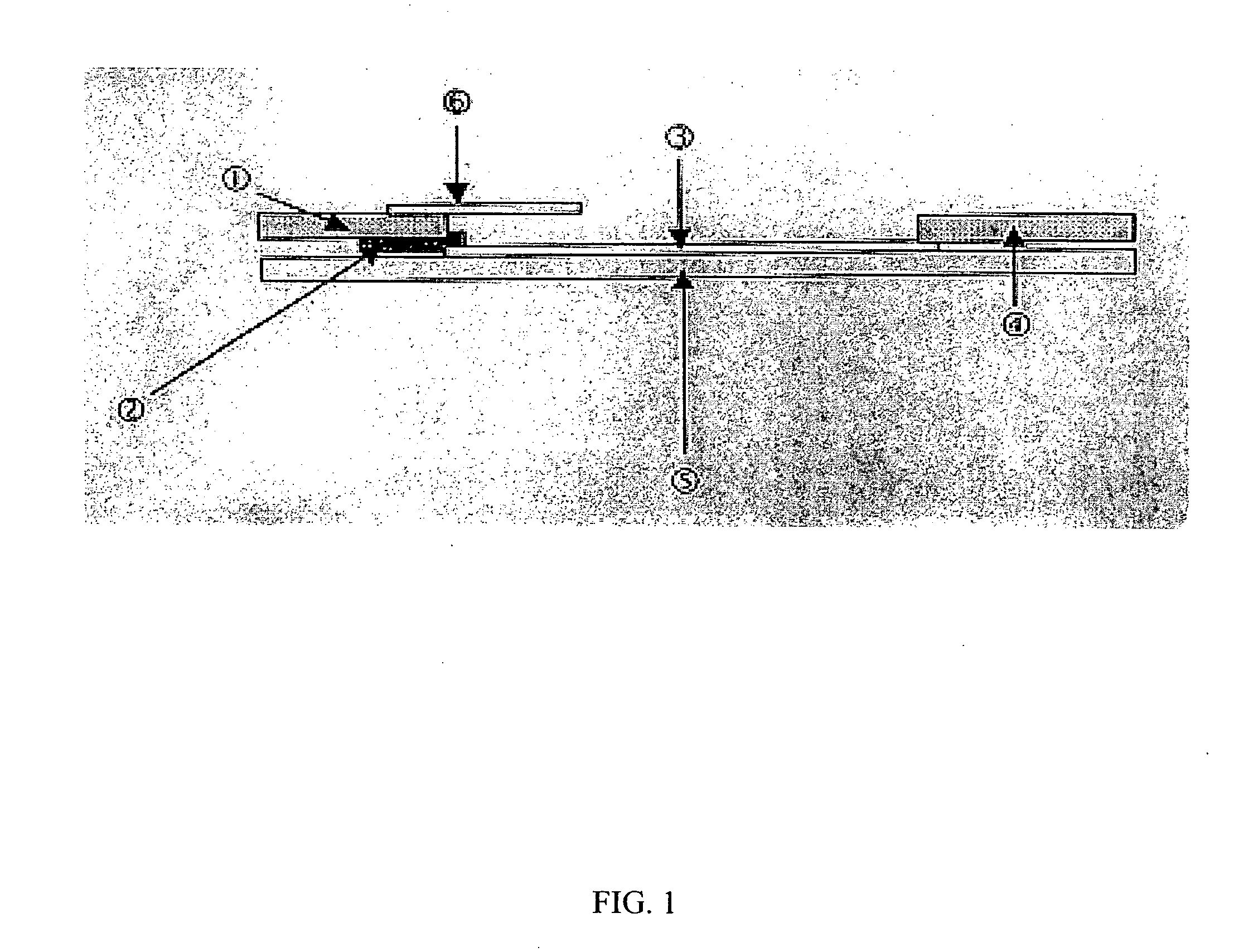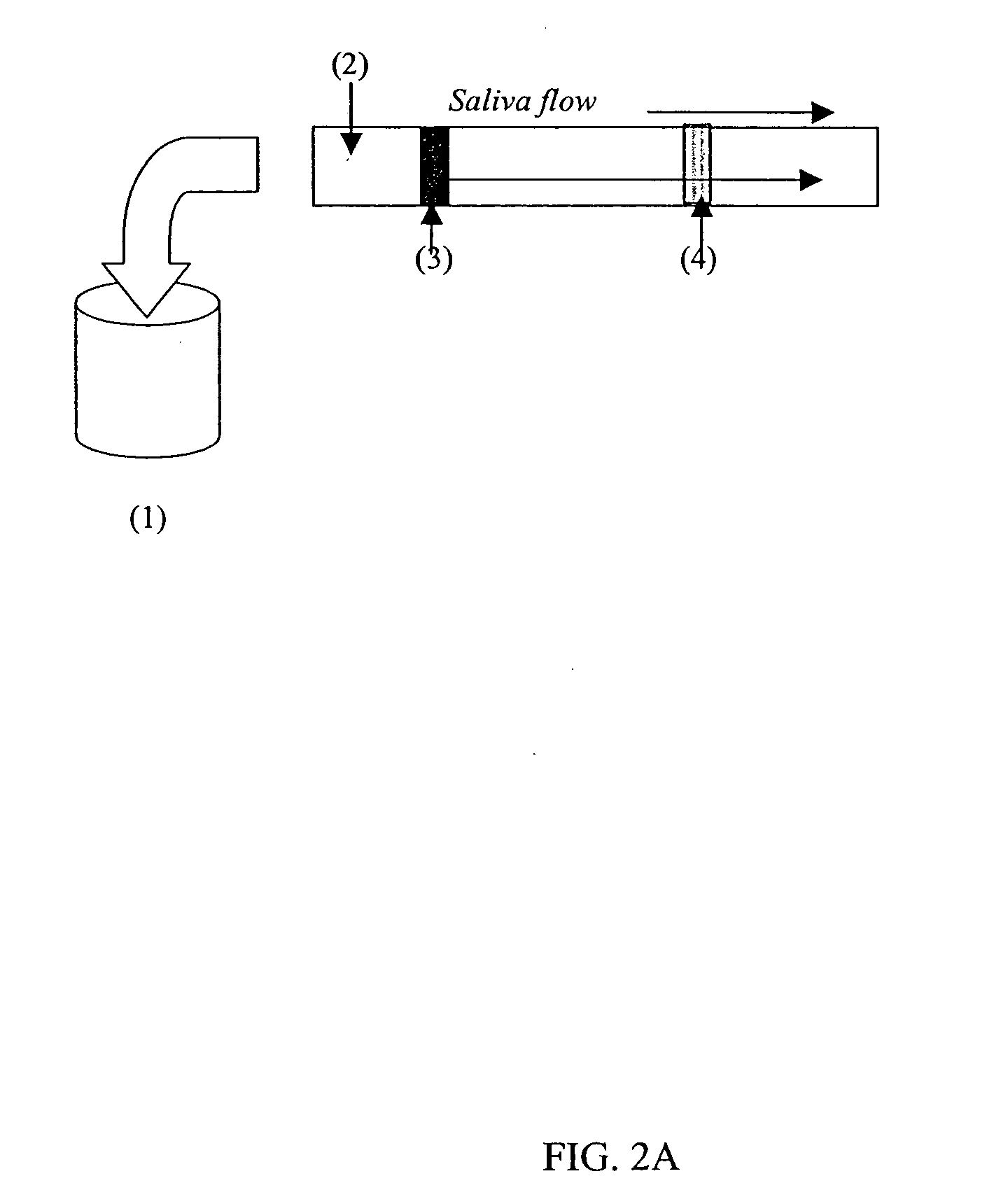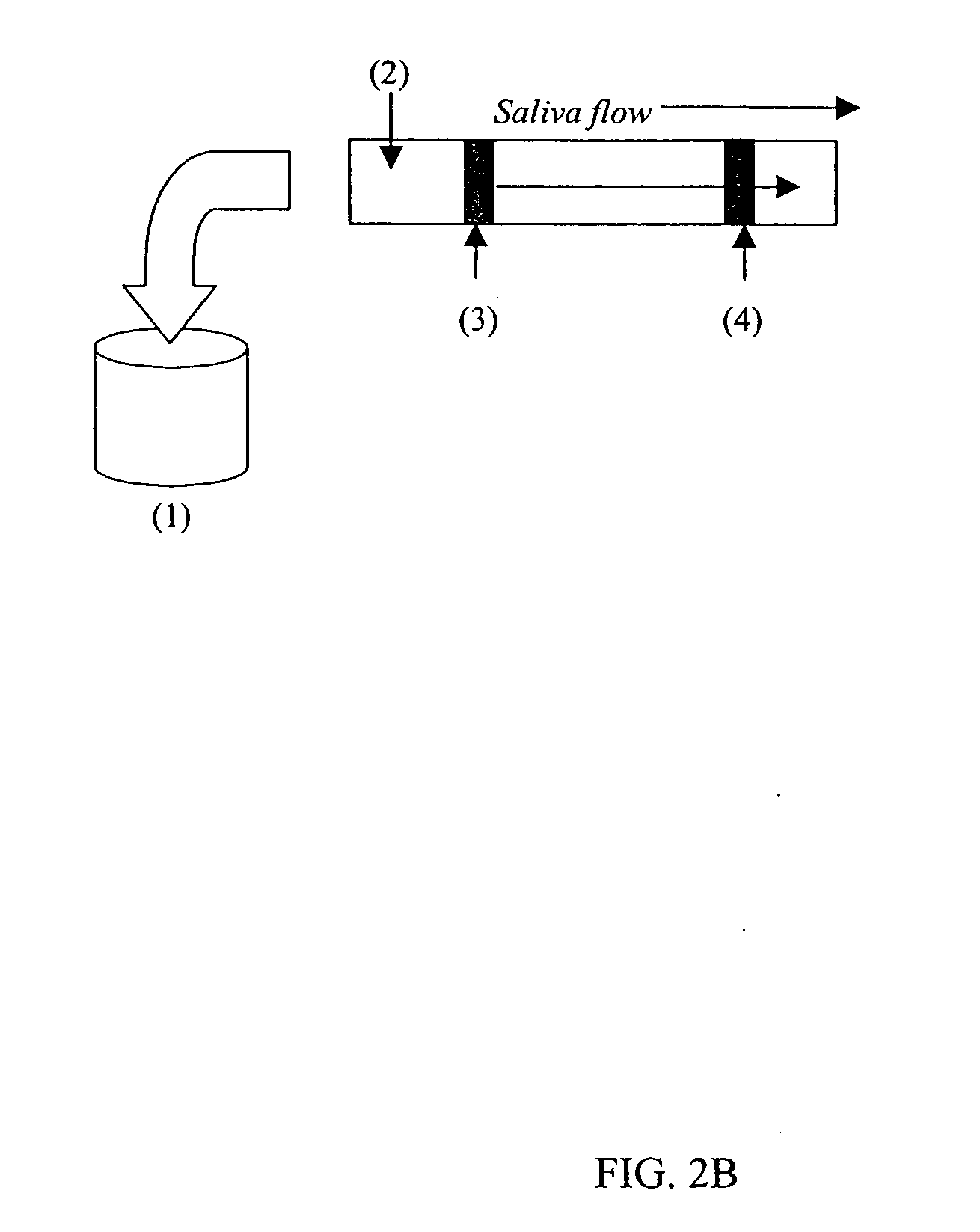Diagnostic assays for determination of dental caries susceptibility
a caries susceptibility and diagnostic assay technology, applied in the field of dental care, can solve the problems of no diagnostic tool to rapidly predict caries activity with accuracy, and no chairside assays have been developed for us
- Summary
- Abstract
- Description
- Claims
- Application Information
AI Technical Summary
Benefits of technology
Problems solved by technology
Method used
Image
Examples
example 1
Preliminary Studies
[0114] Studies were carried out to investigate naturally occurring immune responses to S. mutans in human populations for diagnostic purposes. Preliminary studies were conducted to determine the degree of antigen binding to 3 different latex beads (styrene / vinyl carboxylic acid blue 0.200 μm, styrene / vinyl carboxylic acid blue 0.289 μm and styrene / glycidylmethacrylate / epoxy blue 0.360 μm beads, (Bangs Laboratories, Inc., Fishers, Ind.)). A crude mixture of surface antigens of S. mutans strain A32-2 was prepared by autoclaving the bacterial cells in saline (Rantz and Randall extract, Rantz and Randall, 1955). This preparation has been previously determined to contain most, if not all, S. mutans cell surface antigens including fimbrial, GTF, and sAgI / II components. Studies indicated that the antigens coated each of the 3 beads by testing the coated beads with a 1:10 dilution of saliva followed by examination under a microscope. Saliva agglutinated each of the three...
example 2
Assay Preparation and Use
[0117] A. Harvesting S. mutans Cell Surface Antigens
[0118] The procedure is as follows. On day 1, S. mutans strain A32-2 is inoculated from frozen stock into tube #1 containing 7 ml broth. On day 2, streak S. mutans on plate containing TSA to check for purity. On day 3, verify purity of S. mutans, transferring 1 loop to tube #2, which also contains 7 ml broth. On day 4, pour entire tube #2 into 500 ml flask of TSB, BHI. On day 5, harvest S. mutans by centrifugation, wash twice in saline, resuspend in 100 ml saline, autoclave cells and centrifuge. The supernatant is saved and frozen in aliquots.
[0119] B. Procedure for Adhering S. mutans Antigen to the Carboxyl-Modified Microspheres
[0120] Wash 200 μl of microspheres twice in 2 ml of Activation Buffer (Acetate Buffer—0.1 M Acetic acid, 0.1M Sodium acetate, pH 4.8). Washing is accomplished by centrifuging at 12,000 rpm for 15 min. After second wash, resuspend pellet in 2 ml of activation buffer. While mixing...
example 3
Materials and Methods
[0127] The materials used included nitrocellulose membranes supplied by Schleicher & Schuell (Keene, N.H.), two different types of blue latex bead particles: carboxyl modified (two sizes: 0.2 μm and 0.289 μm) and epoxy modified (size 0.360 μm) (Bangs Laboratories, Fishers, Ind.), S. mutans antigen (cell wall extract, GTF, fimbriae, or antigen I / II), anti-human IgA (Fc specific; Sigma Chemical Co., St. Louis, Mo.), and saliva samples from individuals known to be caries resistant or caries susceptible.
[0128] The first step in preparing an assay was harvesting S. mutans antigen and coating blue latex bead particles with it. Next, the blue latex beads were pipetted onto the nitrocellulose membrane in a straight line approximately one inch from the end that was to be dipped into the saliva. Tests were conducted to develop efficient movement of the beads through the conjugate pad onto the nitrocellulose membrane. In addition, studies were conducted to determine the ...
PUM
| Property | Measurement | Unit |
|---|---|---|
| diameter | aaaaa | aaaaa |
| size | aaaaa | aaaaa |
| size | aaaaa | aaaaa |
Abstract
Description
Claims
Application Information
 Login to View More
Login to View More - R&D Engineer
- R&D Manager
- IP Professional
- Industry Leading Data Capabilities
- Powerful AI technology
- Patent DNA Extraction
Browse by: Latest US Patents, China's latest patents, Technical Efficacy Thesaurus, Application Domain, Technology Topic, Popular Technical Reports.
© 2024 PatSnap. All rights reserved.Legal|Privacy policy|Modern Slavery Act Transparency Statement|Sitemap|About US| Contact US: help@patsnap.com










